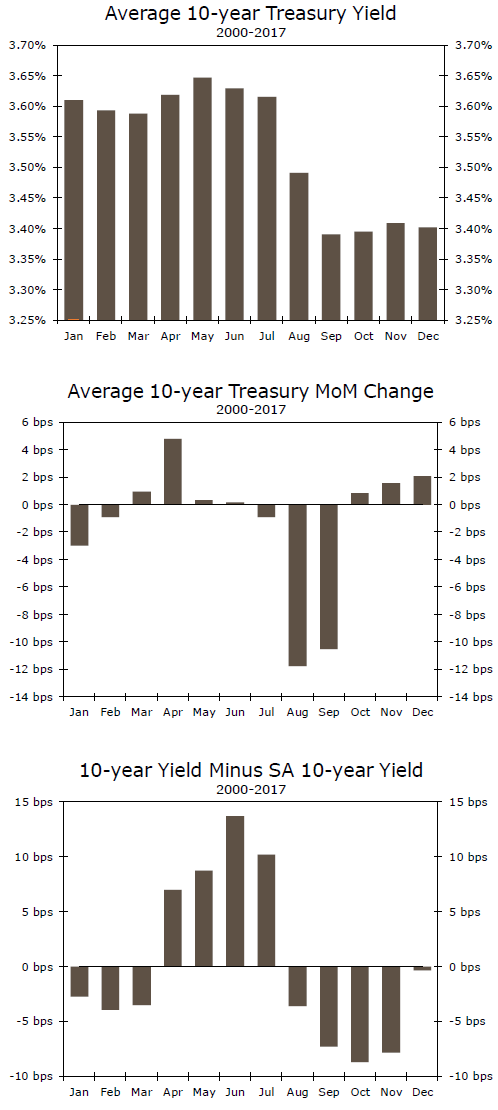When evaluating economic variables, it is essential to be aware if they exhibit seasonal behavior. Correcting for seasonal patterns often allows the underlying trend to surface more clearly.
Seasonal Trends in Credit Markets?
Most of the headline-grabbing economic indicators exhibit seasonal distortions and are thus seasonally-adjusted to cut through the noise of the calendar. It is no surprise, for example, that non-seasonally-adjusted retail sales jump around the winter holidays. A seasonally-adjusted series serves the important function of stripping out annual events/trends such as holidays and seasonal patterns to make analysis of the underlying trend more manageable. Other widely cited indicators, such as the 10-year Treasury yield, are quoted in non-seasonally adjusted terms, as is the standard for this type of security. However, in our analysis, we found that from the period of 2000-2017, the 1o-year Treasury yield exhibited visible seasonal behavior (top chart). One would perhaps expect slight variations in yields from month to month, with no clear pattern emerging. However, the rise in yields we see during the summer months and subsequent decline in the fall is hard to ignore. When this exercise was repeated for periods within this larger sample (2000-2007 and 2008-2017), the results yielded the same seasonal trends.
Summer Selloff?
As shown in the top chart, yields tend to peak in May and remain high through July before falling in August and September. This pattern holds constant through all the periods we tested. Likewise, the largest month-overmonth increase from 2000-2017 occurred in May, with an average gain of roughly 5 bps, while August and September typically experience the largest yield drop offs of 12 bps and 11 bps, respectively. Yields then tend to plateau to finish out the year. It is important to note that the perceived jump in yields from December to January (when looking at the top chart) is actually a little misleading because of a level gap for those months. Historically, yields tend to fall in January, month over month (middle chart).
Seasonality, So What?
To better test our seasonal hypothesis, we applied a seasonal filter to the series and then subtracted it from the original 10-year Treasury series (bottom chart). In general, if a series exhibits little to no seasonal behavior, the difference between the two series should be zero, or close to zero. However, as shown in the bottom chart, the summer months, particularly May, June and July, reveal seasonal behavior with an upward bias. Similarly, the months of September, October and November appear to exhibit seasonal distortions to the downside. While the difference between the two series is not enormous, it is large enough in certain months to ask questions regarding the potential causes for such seasonal patterns. We will explore the drivers behind the seasonality in the 10-year in a follow-up report next week.













